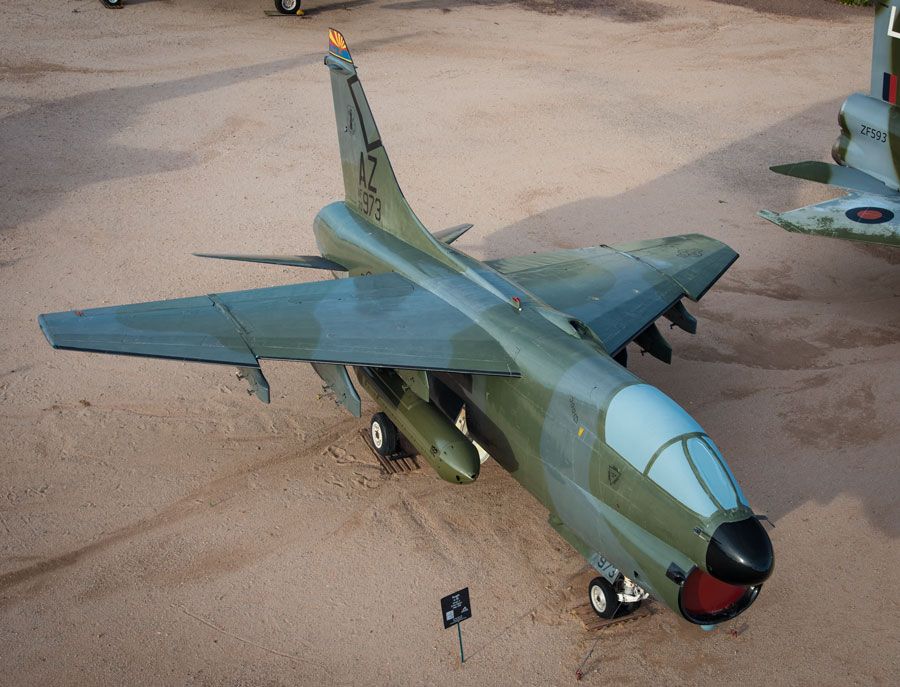VOUGHT A-7D CORSAIR II
The A-7 Corsair II was initially developed in response to a 1963 U.S. Navy requirement for an aircraft to replace the Douglas A-4 Skyhawk. Since the Navy wanted the aircraft to be in service by 1967, the speed of development was essential. The Vought company based their contract-winning design on their F-8 Crusader which was already in Navy service. The prototype flew in 1965 and the first A-7 squadron entered combat in Vietnam in December 1967. The plane proved to be wildly successful as a close air support and strike aircraft. The U.S. Air Force was so impressed that for the second time in a decade they chose to adopt a Navy design for their own use. The A-7D differed from the Navy version in several ways. It used the Air Force boom refueling system instead of the Navy probe and drogue system and had a significantly more powerful engine. In addition, it was equipped with an internal gun that had been lacking in the earlier versions of the aircraft. The A-7D joined the F-4 Phantom II in the Air Force inventory in 1968 and entered combat in 1972. Most of the Air Force’s A-7s found their way into the Air National Guard and remained in service until the early 1990s.
Wingspan | 38 ft 9 in |
Length | 46 ft 1 in. |
Height | 16 ft |
Weight | 42,000 lbs (loaded) |
Maximum Speed | 698 mph |
Service Ceiling | 51,000 ft |
Range | 1,780 miles |
Engines | One Alllison TF-41-A-1 turbojet with 14,500 pounds of thrust |
Crew | 1 |
Manufacturer
Vought
Markings
162nd Tactical Fighter Training Wing, Arizona Air National Guard, Tucson International Airport, 1990.
Serial Number
70-973
Designation
A-7D
